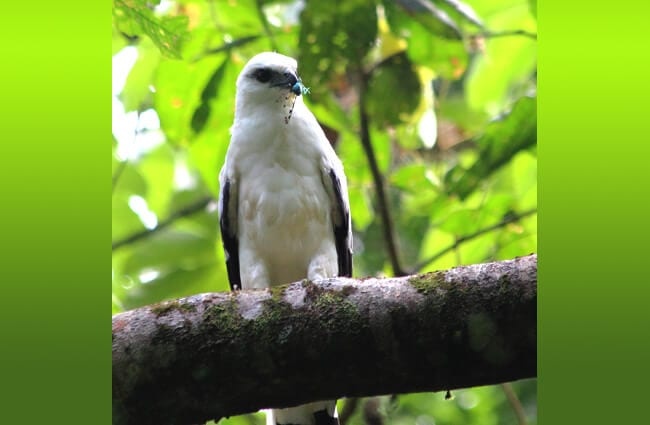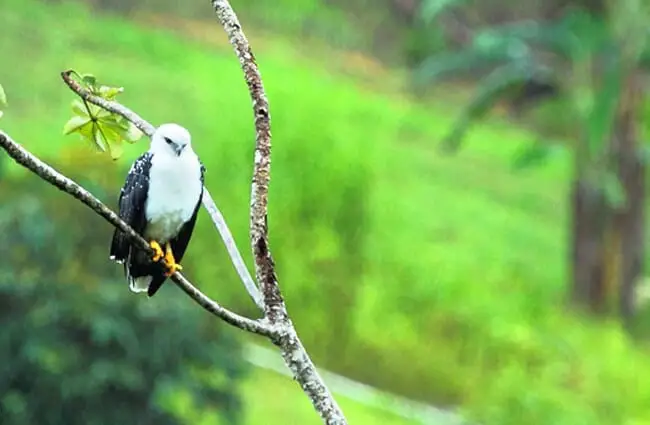Unveiling the Ghost of the Canopy: A Comprehensive Guide to the White Hawk
The White Hawk, a striking bird of prey, remains relatively unknown despite its captivating beauty and ecological importance. Found primarily in the dense forests of Central and South America, this hawk presents a unique combination of physical characteristics and behavioral patterns that set it apart from its relatives. This guide delves into the fascinating world of the White Hawk, exploring its habitat, evolution, behavior, and its role within the intricate web of life.

Habitat and Distribution
The White Hawk’s range extends from southern Mexico through Central America and into the western portions of South America, including Colombia, Ecuador, Peru, and Panama. It prefers humid, mature forests, typically at elevations between sea level and 1,500 meters, although it can occasionally be found at higher altitudes. The hawk demonstrates a preference for undisturbed primary forests, making it an indicator species for forest health. Its presence often signifies a relatively intact ecosystem. These forests provide the dense canopy cover crucial for nesting, roosting, and ambushing prey.
Finding White Hawks in the Wild
For those eager to spot a White Hawk, focusing on mature, undisturbed forests within its range is key. Patient observation from viewpoints overlooking forest canopies during early morning or late afternoon—when hawks are most active—can increase your chances. Listen for its distinctive, somewhat mournful, whistle‑like call. Unlike many raptors, the White Hawk spends considerable time perched within the forest interior, making open‑sky soaring less common.
Evolutionary History
The White Hawk, scientifically known as Buteo albicauda, belongs to the Buteoninae subfamily within the Accipitridae family—a group encompassing hawks, eagles, and kites. While its precise evolutionary lineage is still under investigation, genetic studies suggest it is most closely related to other forest hawks within the Buteo genus. Its unique white tail and overall coloration are thought to have evolved as a form of camouflage within the dappled light of the forest canopy, aiding both in hunting and in avoiding detection by predators. The species likely diverged from its closest relatives millions of years ago, adapting to the specific ecological conditions of the neotropical forests.

Physical Characteristics
The White Hawk is a medium‑sized raptor, typically measuring 50 to 60 centimeters in length with a wingspan of approximately 95 to 110 centimeters. The most striking feature is its pure white tail, contrasting sharply with its dark brown or black plumage. Adults have bright red irises, while juveniles exhibit yellow eyes that gradually transition to red with maturity. The legs and feet are yellow, equipped with sharp talons essential for capturing prey. Sexual dimorphism is minimal, with females being slightly larger than males. This coloration is not albinism; the hawk produces normal pigmentation, but the white tail is genetically determined.
Diet and Hunting Strategies
The White Hawk is a versatile predator with a diet primarily consisting of small mammals, reptiles, amphibians, and large insects. Common prey includes rodents, lizards, snakes, and occasionally birds. Unlike many raptors that rely on soaring to locate prey, the White Hawk is a sit‑and‑wait predator. It perches on concealed branches within the forest canopy, patiently scanning the undergrowth for movement. When prey is detected, it launches a swift, silent attack, using its sharp talons to secure the victim. It often carries prey to a secluded perch for consumption. Its diet plays a crucial role in regulating populations of small vertebrates within its ecosystem.
Reproduction and Life Cycle
White Hawks are generally solitary birds, except during the breeding season. They typically form monogamous pairs that may last for several years. Breeding occurs during the dry season, usually between February and May. Nests are built high in the canopy of large trees, often concealed within dense foliage. They construct relatively simple platforms of sticks and twigs, lined with softer materials such as leaves and moss. The female typically lays one or two eggs, which are incubated for approximately 35 to 40 days. Both parents participate in feeding the chicks, which fledge—leave the nest—after about 60 to 70 days. Young hawks remain dependent on their parents for several months after fledging, learning essential hunting skills before becoming independent.

Ecological Role and Interactions
The White Hawk plays a vital role in maintaining the balance of its forest ecosystem. As an apex predator, it helps control populations of small vertebrates, preventing overgrazing and maintaining plant diversity. It also contributes to seed dispersal through its consumption of fruits and berries. The hawk interacts with other species in various ways. It occasionally competes with other raptors for prey but generally maintains distinct foraging niches. It may also be preyed upon by larger birds of prey, such as eagles or owls, although this is relatively uncommon. Its presence is often correlated with healthy forest ecosystems and biodiversity.
Human Interactions
While not typically considered a threat to humans, White Hawks can occasionally be observed near settlements, particularly in areas with abundant prey. They are generally shy and avoid close contact. Habitat loss and deforestation pose the most significant threats to White Hawk populations. As forests are cleared for agriculture, logging, and development, the hawk loses its nesting sites and foraging grounds. Conservation efforts focused on protecting and restoring forest habitats are crucial for ensuring the long‑term survival of this magnificent bird. In some cultures, the hawk is seen as a symbol of power and grace, featuring in local folklore and art.
Caring for White Hawks in Captivity
Keeping White Hawks in captivity requires specialized knowledge and facilities. A large, spacious enclosure is essential, providing ample room for flight and exercise. The enclosure should be furnished with perches of varying heights and textures, as well as opportunities for shade and shelter. The diet should consist of whole prey items, such as chicks, mice, and rats, to provide essential nutrients. Regular veterinary care is crucial, including monitoring for signs of illness and providing preventative care. It is important to avoid excessive human interaction, as this can lead to stress and behavioral problems. Providing enrichment activities, such as puzzle feeders and novel objects, can help stimulate the hawk and prevent boredom. Maintaining strict hygiene protocols is essential to prevent the spread of disease.

Interesting Facts
- The white tail feathers are not completely white until after the first molt.
- Juvenile hawks have a distinctive barred tail pattern that disappears with age.
- They are known for their relatively quiet flight, allowing them to approach prey undetected.
- White Hawks have a strong grip and can carry prey much heavier than themselves.
- The species exhibits a degree of site fidelity, returning to the same nesting areas year after year.
The White Hawk, a captivating symbol of the neotropical forests, deserves our admiration and protection. By understanding its biology, ecology, and threats, we can contribute to its conservation and ensure that this magnificent bird continues to grace the skies for generations to come.

![Red Angus Closeup of a beautiful Red Angus cowPhoto by: U.S. Department of Agriculture [pubic domain]https://creativecommons.org/licenses/by/2.0/](https://animals.net/wp-content/uploads/2020/03/Red-Angus-4-238x178.jpg)




![Red Angus Closeup of a beautiful Red Angus cowPhoto by: U.S. Department of Agriculture [pubic domain]https://creativecommons.org/licenses/by/2.0/](https://animals.net/wp-content/uploads/2020/03/Red-Angus-4-100x75.jpg)

